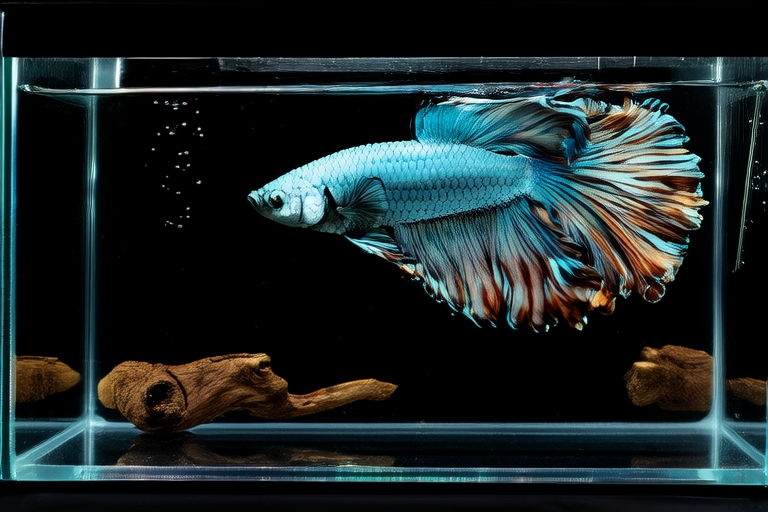The Ultimate Guide to Betta Fish Care: Secrets Every Owner Should Know
Betta fish, with their vibrant colors and flowing fins, are among the most captivating freshwater aquarium fish. Often referred to as “Siamese fighting fish,” they are beloved by hobbyists worldwide. However, owning a betta fish comes with responsibilities that go beyond simply admiring their beauty. To ensure your betta thrives, you need to provide the right environment, diet, and care. In this ultimate guide, we’ll cover everything you need to know about betta fish care, from tank setup to breeding tips.
Setting Up the Perfect Betta Tank
A proper tank setup is the foundation of successful betta fish care. Bettas are tropical fish that require specific conditions to stay healthy and happy.
Tank Size
Contrary to popular belief, bettas cannot thrive in tiny bowls or vases. A single betta requires at least a 5-gallon tank to swim comfortably and maintain good health. Larger tanks (10 gallons or more) are even better, as they provide more stable water conditions and room for enrichment.
Filtration
While bettas can survive in still water, a gentle filtration system is highly recommended. Bettas have delicate fins, so choose a filter with adjustable flow to avoid stressing them. Sponge filters or hang-on-back filters with low flow settings are ideal.
Plants and Decorations
Bettas love to explore and hide, so include live or silk plants and soft decorations in their tank. Live plants like Java fern, Anubias, and Amazon sword not only beautify the tank but also improve water quality by absorbing nitrates. Avoid sharp or rough decorations that could tear their delicate fins.
Maintaining Water Quality
Water quality is crucial for your betta’s health. Poor water conditions can lead to stress, illness, and even death.
Temperature
Bettas are tropical fish and thrive in water temperatures between 76°F and 82°F (24°C to 28°C). Use a reliable aquarium heater to maintain a consistent temperature. Sudden fluctuations can stress your betta, so monitor the temperature regularly.
pH Levels
Ideal pH levels for bettas range from 6.5 to 7.5. Test your water weekly using an aquarium test kit and make adjustments if necessary. Avoid drastic changes, as they can harm your fish.
Regular Water Changes
Perform partial water changes (25% to 30%) every week to remove toxins like ammonia and nitrites. Always treat tap water with a dechlorinator before adding it to the tank. Skipping water changes can lead to poor water quality and health issues.
Feeding Your Betta Fish
A balanced diet is essential for your betta’s health and vitality. These carnivorous fish have specific dietary needs that must be met.
Types of Food
Bettas thrive on high-protein foods like pellets, flakes, and frozen or live treats. Look for betta-specific pellets that contain fish meal, shrimp, or other protein-rich ingredients. Supplement their diet with occasional treats like bloodworms, brine shrimp, or daphnia.
Feeding Schedule
Feed your betta once or twice a day, offering only what they can consume in two minutes. Overfeeding can lead to obesity and water pollution. Skip feeding one day per week to allow your betta’s digestive system to rest.
Common Health Issues and Treatments
Bettas are hardy fish, but they are susceptible to certain health problems. Early detection and treatment are key to keeping your fish healthy.
Fin Rot
Symptoms: Tattered or disintegrating fins, often accompanied by discoloration.
Treatment: Improve water quality and use an antibacterial medication. Avoid overcrowding and aggressive tank mates.
Ich
Symptoms: White spots resembling grains of salt on the body and fins.
Treatment: Raise the tank temperature slightly and treat the water with an ich medication. Perform regular water changes.
Swim Bladder Disorder
Symptoms: Difficulty swimming, floating at the surface, or sinking to the bottom.
Treatment: Fast your betta for 24 to 48 hours, then feed them a cooked, skinned pea to relieve constipation. Ensure their diet is varied and balanced.
Understanding Betta Behavior
Bettas are intelligent and expressive fish. Understanding their behavior can help you provide better care and identify potential issues.
Tank Mates
Bettas are territorial and may become aggressive toward other fish, especially males. If you want tank mates, choose peaceful species like Corydoras catfish, snails, or small tetras. Always monitor interactions closely.
Signs of Stress
Stressed bettas may display faded colors, clamped fins, lethargy, or excessive hiding. Common stressors include poor water quality, incompatible tank mates, and inadequate space. Address the root cause promptly to restore their well-being.
Enrichment
Bettas enjoy mental stimulation. Add floating toys, mirrors (used sparingly), or rearrange decorations to keep them engaged. Regular interaction with your betta can also strengthen your bond.
Breeding Betta Fish
Breeding bettas can be a rewarding experience, but it requires careful planning and preparation.
Selecting Healthy Parents
Choose healthy, mature bettas with vibrant colors and no signs of illness. Ensure both the male and female are well-fed and conditioned before introducing them.
Setting Up a Breeding Tank
Use a separate 10-gallon tank with a gentle sponge filter and plenty of floating plants. Maintain pristine water conditions and a temperature of around 80°F (27°C).
Introducing the Pair
Introduce the male and female gradually, using a divider to prevent aggression. Once the male builds a bubble nest, remove the divider and observe their behavior. After spawning, remove the female to prevent harm.
Raising Fry
Feed the fry infusoria or liquid fry food initially, transitioning to baby brine shrimp as they grow. Perform frequent water changes to maintain water quality. Be patient, as raising fry requires time and dedication.
Final Thoughts
Caring for a betta fish is a rewarding journey that requires knowledge, patience, and commitment. By providing the right tank setup, maintaining excellent water quality, offering a balanced diet, and understanding their behavior, you can ensure your betta lives a long, healthy, and happy life. Whether you’re a beginner or an experienced aquarist, these tips will help you become the best betta owner you can be. Remember, your betta relies on you for its well-being—so give it the love and care it deserves!
